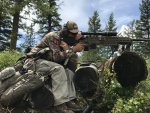The way I read it, S&B had a bad apple, and Leupold did horrible, per LowLight, or did I misunderstand?
I was in the second class he was talking about. One Vortex had an issue, I shot next to the guy with the S&B; it's windage knob wouldn't reset to zero. Every Leupold MK4 in the class crumbled.




